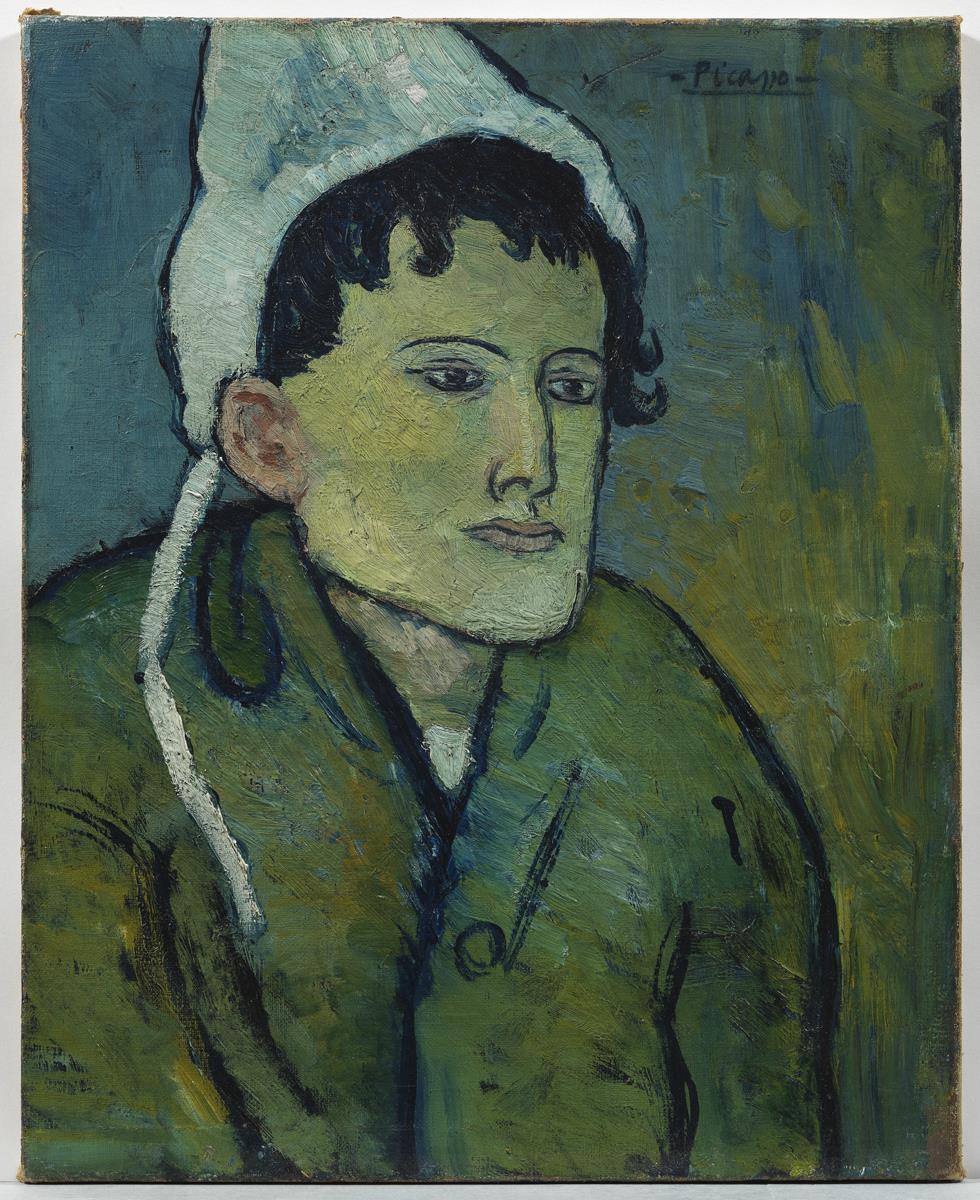Woman with a Bonnet, 1901
In the spring of 1901, Picasso took his second trip to Paris, this time in the company of his friend, painter Antoni Jaumandreu Bonsoms, with the main and exciting objective of carrying out an exhibition at the prestigious Ambroise Vollard gallery in Paris. The show was well received and Picasso, who set up his studio on Boulevard de Clichy in the same space where his distressed friend Carles Casagemas (who committed suicide that February) had briefly resided, decided to stay for an extended period in the French capital and did not return to Barcelona until January 1902. If the paintings presented chez Vollard partly translate, in their intensity of colour and rhythm of brushstrokes, the lifestyle guzzled up by the inhabitants of the metropolis under the spell of the Belle Époque, the canvases produced since the end of that summer, and especially during that autumn, reveal that the artist entered a new stage of marked introspection, due to the way in which they are permeated with an omnipresent blue and feature marginalised individuals, who live on the verge of social exclusion. Years later, Picasso expressed that he was contemplating the death of his friend Casagemas when he began to paint in blue.
In any case, in search of new subjects to paint, Picasso managed to gain access to the Saint-Lazare women’s prison that autumn thanks to his friend Dr. Louis Jullien. As a result of his various visits to the jail, a series of paintings featuring the inmates, many of them prostitutes who had been diagnosed with syphilis―considered at that time a sufficient offence to deprive a woman of her freedom―saw the light. To distinguish them from common prisoners, they were forced to wear a white headpiece similar to a Phrygian cap, which automatically reveals part of the identity of the model who inspired “Woman with a Bonnet”...


